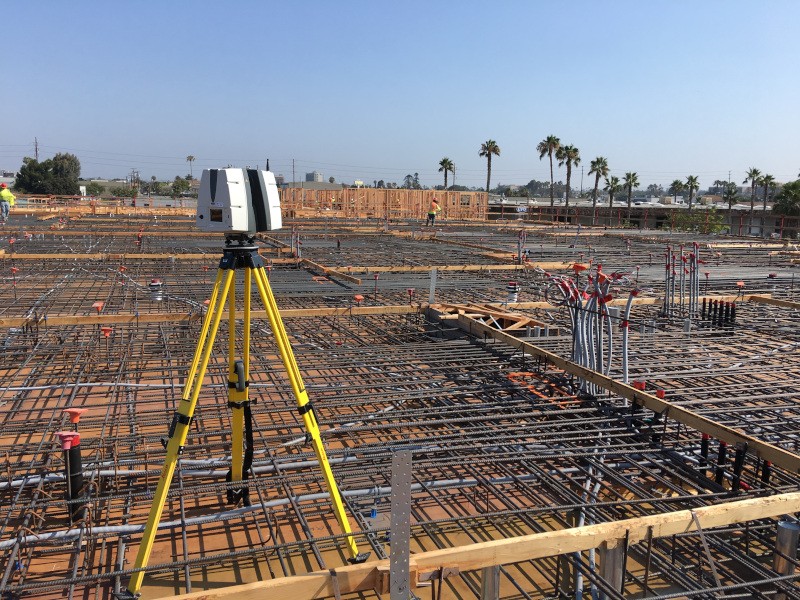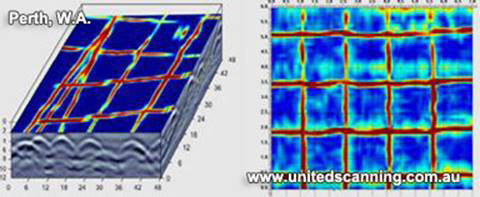The Science of Construction: Concrete Scanning and Imaging
Wiki Article
Revolutionizing Concrete Inspection: The Power of GPR Scanning in Building
Are you tired of standard techniques for inspecting concrete in building? Look no more! GPR scanning is right here to change the means you inspect concrete. With its innovative innovation, GPR scanning provides numerous benefits over conventional techniques. In this article, we will certainly check out the basics of GPR innovation, its applications in construction, and the future fads and technologies that will certainly shape the sector. Prepare yourself to uncover the power of GPR scanning in construction!
The Basics of GPR Innovation
If you wonder about the fundamentals of GPR modern technology, you'll be impressed at just how it transforms concrete assessment. Ground Passing Through Radar (GPR) is a non-destructive testing method that utilizes electro-magnetic waves to create pictures of subsurface structures. It functions by sending high-frequency radio waves right into the concrete and determining the shown signals. This permits building and construction professionals to see what lies below the surface area without needing to harm the concrete or damage.GPR modern technology has countless applications in the field of concrete evaluation. In addition, GPR can identify the existence of energies, such as pipelines and wires, ingrained within the concrete, helping to stay clear of unexpected damages throughout building or improvement jobs.
The benefits of GPR innovation are undeniable. It provides a quick, exact, and non-invasive method of evaluating concrete structures. With GPR, building and construction professionals can save time and money by preventing unneeded fixings, ensuring security, and improving overall task efficiency. By revolutionizing concrete assessment, GPR technology has become a crucial tool in the building industry.
Applications of GPR Scanning in Building And Construction
You can discover a large array of applications for GPR scanning in the construction industry. With its ability to pass through concrete and various other materials, GPR scanning has actually come to be an indispensable device for construction specialists.In addition to finding rebar, GPR scanning can also be utilized to determine spaces or tooth cavities within concrete. This is especially valuable for guaranteeing the structural integrity of a structure or bridge. By discovering areas of weakness, construction workers can take the essential steps to enhance these sections, stopping potential collapses or accidents.

General, GPR scanning has transformed the method building and construction professionals approach concrete inspection. Its adaptability and accuracy make it a vital device for ensuring the safety and security and performance of building and construction jobs.
Benefits of GPR Scanning Over Typical Approaches
The advantages of GPR scanning over standard approaches include its capability to supply real-time photos, find surprise things, and accurately map below ground energies. With GPR scanning, you can see what's occurring beneath the surface in real-time, enabling immediate decision-making. Unlike standard techniques that require taxing and pricey excavation, GPR scanning gives instantaneous pictures, conserving you money and time. This modern technology is specifically practical in building and construction projects where time is essential.GPR scanning likewise has the impressive capability to find hidden things. Whether it's hidden pipelines, cords, or rebar within concrete frameworks, GPR scanning can detect them precisely, minimizing the danger of damaging these things throughout construction. This not just makes certain the safety of employees yet additionally protects against potential costly repair work down the line.
Furthermore, GPR scanning is exceptionally reliable in precisely mapping below ground energies. It supplies thorough information concerning the place, deepness, and dimension of hidden energies, enabling building teams to collaborate with precision and avoid accidental damages. This degree of Recommended Reading precision makes sure that tasks stay on schedule and within budget plan.
Obstacles and Limitations of GPR Scanning in Concrete Assessment
To successfully address obstacles and restrictions in concrete examination, it is very important to recognize the capacity for false readings in GPR scans. When using Ground Permeating Radar (GPR) for concrete examination, false analyses can occur due to various variables. One common element is the visibility of rebar within the concrete. Concrete Scanning and Imaging. GPR scans can often misunderstand the reflections from rebar as voids or fractures, resulting in imprecise results. Additionally, GPR scans are sensitive to changes in product residential properties, such as moisture web content or gaps. This implies that variants in moisture levels or the existence of air pockets can also result in false readings. Moreover, GPR scans can be impacted by surface area problems, such as harsh or irregular surface areas, which can cause signal distortion and misinterpretation. It's crucial to consider these aspects when analyzing GPR check results and to cross-validate them with various other examination approaches to guarantee accuracy. By recognizing the possibility for false analyses and taking essential precautions, you can get rid of the restrictions and obstacles linked with GPR scanning in concrete examination, and successfully utilize its power to transform the construction market.Future Trends and Innovations in GPR Scanning for Building And Construction
By welcoming new technologies and developments, you can remain ahead of the curve and gain from the future trends and advancements in GPR scanning for the building market. One of the vital future fads is the advancement of even more sophisticated GPR systems that use greater resolution and enhanced accuracy. These systems will permit more specific mapping and discovery of subsurface functions, making it less complicated to identify potential hazards and strategy construction projects as necessary.
In addition, there is recurring research and development in the field of synthetic knowledge (AI) and artificial intelligence (ML) for GPR scanning. These modern technologies have the possible to automate data analysis and analysis, making the scanning process faster and extra efficient. AI and ML algorithms can gain from previous scans and improve their accuracy in time, leading to even more trusted results.
Total, the future of GPR scanning in the construction market looks encouraging. By keeping up with the most up to date fads and developments, you can enhance your construction projects, reduce costs, and ensure the safety and security and durability of your structures.
Conclusion
In conclusion, you now understand the cutting edge power of GPR scanning in building. As the building and construction industry continues to develop, we can anticipate to see additional advancements and innovations in GPR scanning, making it an important component of future building and construction projects.With its capability to penetrate other and concrete materials, GPR scanning has actually come to be a very useful tool for building experts. Whether it's buried pipelines, cables, or rebar within concrete frameworks, GPR scanning can identify them properly, lowering the threat of damaging these objects during building and construction. By comprehending the potential for false readings and taking essential precautions, you read this post here can get rid of the obstacles and constraints linked with GPR scanning in concrete examination, and efficiently use its power to reinvent the construction market.
By embracing brand-new modern technologies and improvements, you can stay in advance of the curve and benefit from the future fads and advancements in GPR scanning for the building and construction market - Concrete Scanning and Imaging. As the building sector proceeds to advance, we can anticipate to see further advancements and innovations in GPR scanning, making it an important part of future building jobs
Report this wiki page